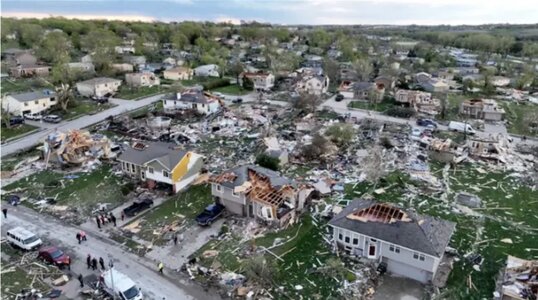Hannah.Taylor
EF4
A picture from a recent article about the tornadoes that hit Oklahoma this weekend piqued my curiosity.

 krdo.com
krdo.com
I noticed the house on the corner is completely destroyed while the one to the right of it took a glancing blow, then the one to the right of it took substantial damage and the one to the right of it looks fairly intact with the middle top portion of the roof impacted the most.
Referring to that row of four houses at the bottom of the pic.

My thought process here is why not mass produce censors for large neighborhoods in tornadic prones areas to better understand the wind profiles inside the tornado to better explain why one house on a street receives catastrophic damage and another only receives a glancing blow.

Tornado outbreak in Oklahoma prompts calls to take cover as the threat of severe storms continues from Missouri to Texas | KRDO
A live TV news station covering breaking news and traffic for Colorado Springs, Pueblo, and Southern Colorado with a strong investigative team
 krdo.com
krdo.com
I noticed the house on the corner is completely destroyed while the one to the right of it took a glancing blow, then the one to the right of it took substantial damage and the one to the right of it looks fairly intact with the middle top portion of the roof impacted the most.
Referring to that row of four houses at the bottom of the pic.

My thought process here is why not mass produce censors for large neighborhoods in tornadic prones areas to better understand the wind profiles inside the tornado to better explain why one house on a street receives catastrophic damage and another only receives a glancing blow.

